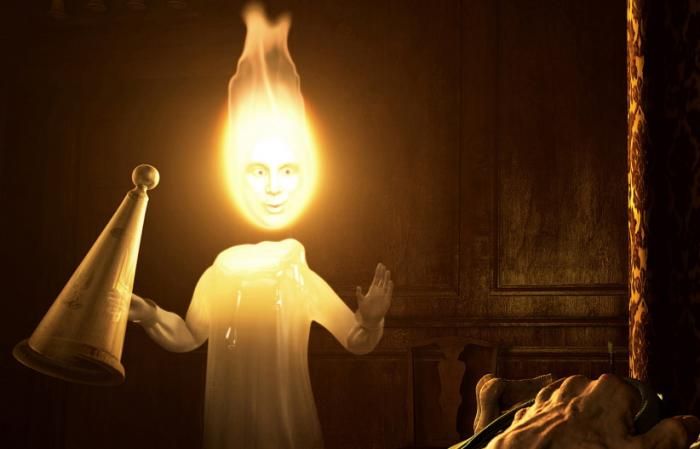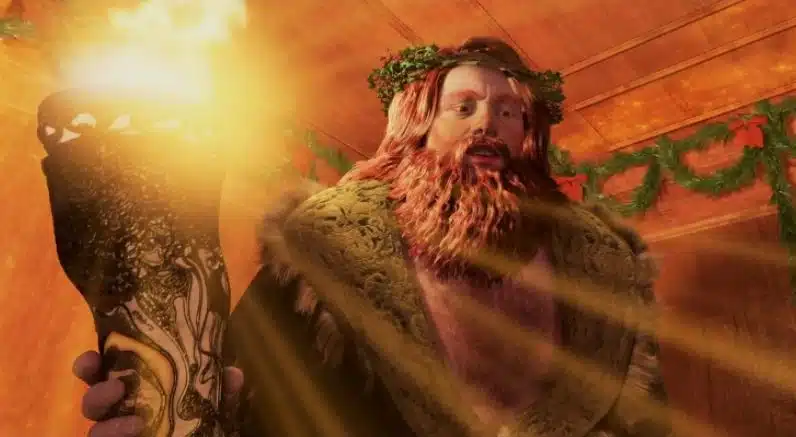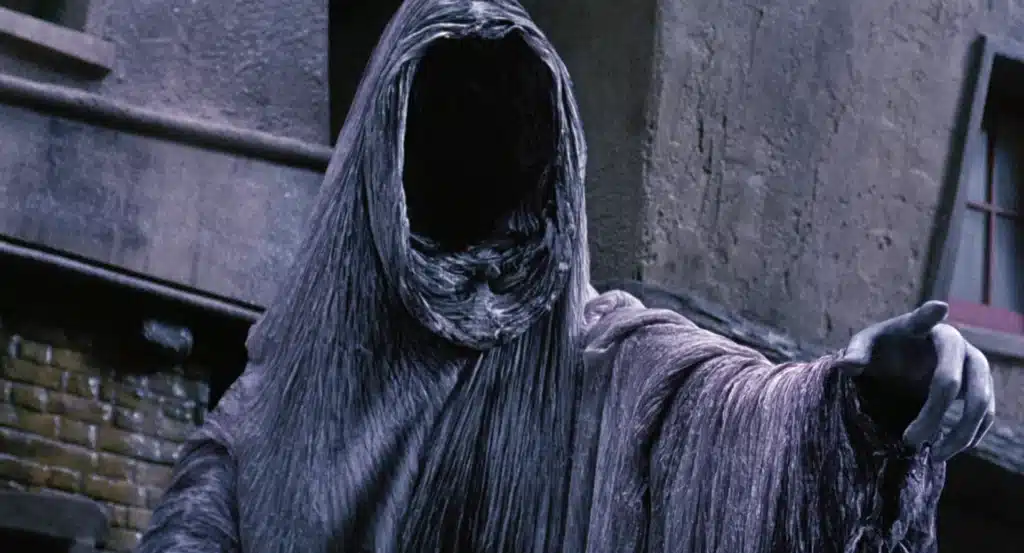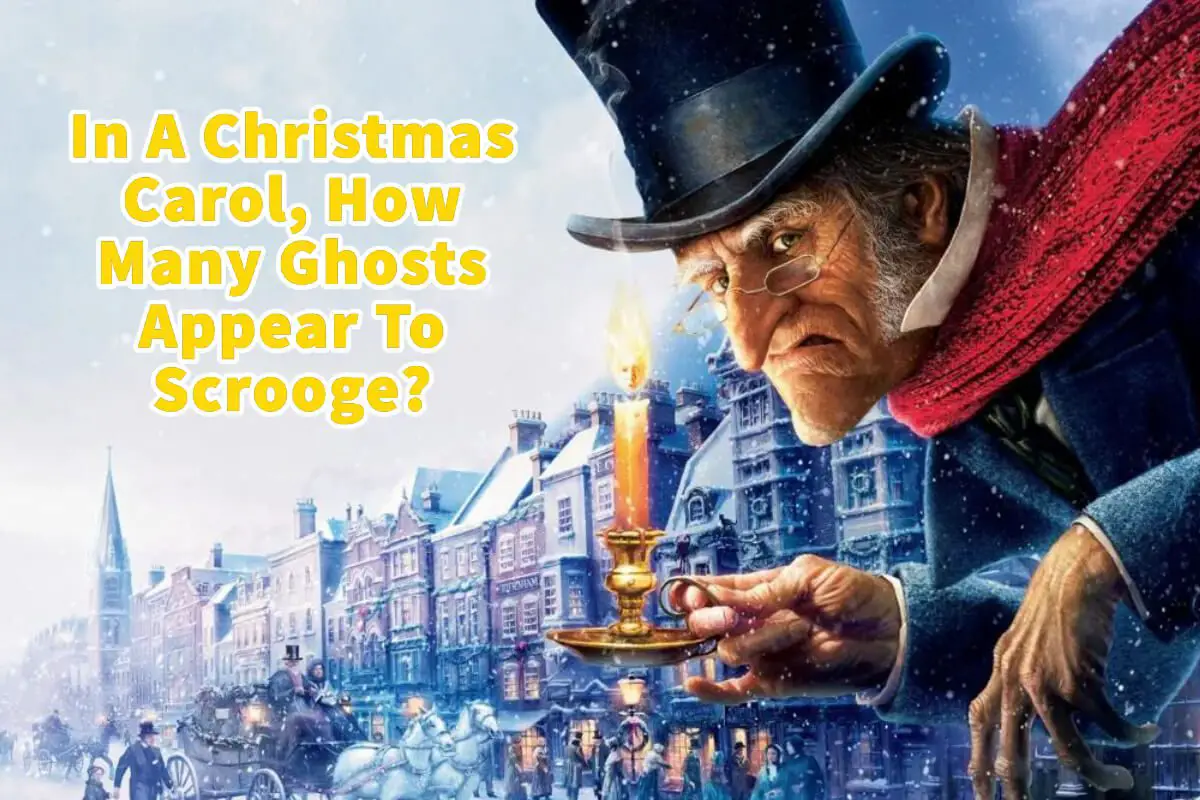One of my favorite Christmas stories is Charles Dickens’s a Christmas Carol. This story continues to be a favorite Christmas story for many people.
Four ghosts appear to Ebenezer Scrooge in the Christmas Carol. The first ghost is Jacob Marley, his former business partner. The following three ghosts are the Christmas past, the Christmas present, and the Christmas future. Each of these ghosts was sent to teach Scrooge about redemption and change.
Table of Contents
- About The Four Ghosts That Appear To Scrooge In A Christmas Carol
- 10 Reasons “A Christmas Carol” by Charles Dickens Remains a Cherished Holiday Classic
- Frequently Asked Questions
- Related Questions
About The Four Ghosts That Appear To Scrooge In A Christmas Carol
In a Christmas Carol, four ghosts appear to Ebenezer Scrooge. Each of these ghosts has a different role in trying to convince Ebenezer Scrooge that there is still time to change and time for redemption.
The ghosts that visit Ebeneezer Scrooge are Jacob Marley, the spirit of Christmas past, the ghost of Christmas present, and the ghost of Christmas future.
The Ghost Of Jacob Marley

The ghost of Jacob Marley is the first ghost in the Christmas Carol to appear to Scrooge. He is a fictional character in Charles Dickens’s 1843 Christmas Carol story.
When the ghost of Jacob Marley visited Ebeneezer Scrooge, Jacob Marley had been dead for seven years. Previously Marley had been Scrooge’s business partner.
Marley and Scrooge were very alike; they were both very good at business but were concerned about money and miserly.
For many, Marley appears to have left his life unpunished for his lack of social conscience or care for his fellowmen. Marley has chains he drags around; he has been forced to walk the earth in purgatory.
The ghost of Marley is sent to show Scrooge that it is not too late to change. There can be change and redemption if he acts and changes now.
Marley also tells Scrooge that three other ghosts will visit him. These ghosts will be sent to show Scrooge it is time to change.
The Ghost Of Christmas Past

The ghost of Christmas past is the first ghost to visit Scrooge after the spirit of Marley visits him. Ghost to Christmas past arrives when the clock times one.
The ghost of the Christmas past appears both old and young simultaneously. The spirit of Christmas past has light streaming from the top of its head.
The ghost takes Scrooge through his life’s journey, showing him some of his young adulthood and happier times. He shows Scrooge his lost love Belle and her happy family.
Belle was engaged to Scrooge but decided to break it off as Scrooge was always so busy working and consumed with money. Belle later remarried and found happiness and love with another man.
Scrooge sees Belle and her family and demands to be shown more. But the ghost will not deliver him. The spirit shows Scrooge about Belle as a reference that you could have had, but you lost it.
The Ghost Of Christmas Present

Ghost of Christmas Present is a prominent, vibrant character. He appears in Scrooge’s room, surrounded by a delicious feast.
The Ghost of Christmas Present is a cheerful ghost known to be a very joyful character. He is excited to see Scrooge and is open, giving, kind, and full of the festive Christmas spirit.
Scrooge becomes humbled by the ghost and is willing to learn anything the spirit wants to teach him. The ghost takes him to the home of his nephew Fred and Bob Cratchit.
From visiting Bob Cratchit’s family, he sees that even though they are poor, they love each other. And most of all, he is impressed with Tiny Tim, who, even though he is disabled, is still full of the Christmas spirit and cheer.
The ghost also takes Scrooge to the streets in his neighborhood that he knows so well. He shows Scrooge the poor who have no food and the bakeries who are helping to feed the poor.
Finally, as the Spirit is about to leave, he shows that under his robes are two children – Ignorance and Want. The children are shallow, ragged, and scowling. They are children who are in dire poverty.
In this part, Charles Dickens is warning those who do not care for the poor of society, especially the children. He is also telling us that poverty is not just a thing of the past but also the present.

Listen To Our Podcast About What Is The Main Meaning Of Christmas Carol? below or by clicking here.
The Ghost Of Christmas Future

The final ghost is the ghost of Christmas Future. He is a silent yet frightening ghost, spooky and eerie.
The ghost is also very demanding towards Scrooge and will point whenever he wants Scrooge to see something. He will not stop pointing until he does.
The ghost shows Scrooge a funeral scene in which business people wonder about the money the dead man has left. Then he shows him the locations of people picking through the dead man’s pockets.
Scrooge realizes that this is his death is foretold. The ghost takes Scrooge to the household of Bob Cratchit, and Scrooge is very upset when he realizes that Tiny Tim has passed away.
As a final gesture, the ghost shows him a tombstone that only says ”Ebenezer Scrooge” on the headstone. Scrooge realizes this is his destiny, and life grabs onto the ghost’s robes and pledges that he will change his ways if he will not die in such a solitary death.
The ghost disappears, and Scrooge is left clutching his bedroom curtains. The change or redemption has occurred, and Ebenezer Scrooge is a changed man.
Christmas Carol is one of the best Christmas stories. The reason is that the story’s message is about redemption and our role as members of society to have a social conscience and to help those who may not have all we have.
10 Reasons “A Christmas Carol” by Charles Dickens Remains a Cherished Holiday Classic
Every year, as winter wraps the world in its icy embrace and the festive season begins, Charles Dickens’s “A Christmas Carol” makes its perennial return to bookshelves, stages, and screens.
First published in 1843, this timeless tale continues to captivate readers and audiences around the world. But what gives “A Christmas Carol” its enduring allure?
Here are ten reasons:
- Universal Themes: The story grapples with universal human experiences—redemption, compassion, and the transformative power of kindness. These themes are timeless and resonate with every generation.
- Iconic Characters: Ebenezer Scrooge’s journey from miserliness to merriment is one of literature’s most memorable character arcs. His interactions with characters like Bob Cratchit and Tiny Tim create lasting impressions.
- Ghostly Apparitions: The three spirits of Christmas (Past, Present, and Yet to Come) offer a fascinating exploration of Scrooge’s life and instill a sense of wonder and eeriness that appeals to readers of all ages.
- Reflection on Social Injustices: Dickens was known for highlighting social issues in his works. “A Christmas Carol” delves into the disparity between the rich and the poor, reminding readers of the importance of charity and empathy.
- The Magic of Christmas: The novel embodies the essence of Christmas – forgiveness, love, and togetherness. It’s a heartwarming reminder of the holiday spirit.
- Vivid Descriptions: Dickens’ prose paints a vivid picture of Victorian London, from frosty winter nights to the joyous feasts of Christmas morning. His rich descriptions transport readers directly into the setting.
- A Reminder of Mortality: With the foreboding Ghost of Christmas Yet to Come and the reflection on Scrooge’s life, the story serves as a memento mori, urging readers to make the most of their time and relationships.
- Adaptability: “A Christmas Carol” has been adapted into countless plays, films, and musicals. Its malleable narrative has been reimagined in various cultures and settings, attesting to its universal appeal.
- A Bite-Sized Masterpiece: Unlike some of Dickens’ more voluminous works, “A Christmas Carol” is a novella, making it a perfect read for a cozy winter evening. Its brevity makes it accessible to a broader audience.
- Legacy of Literature: As one of Dickens’ most famous works, the story has influenced countless other Christmas tales and traditions. Many elements, such as the saying “Bah! Humbug!” and the character of Scrooge, have entered the cultural lexicon.
The enduring popularity of “A Christmas Carol” lies in its potent mix of memorable characters, timeless themes, and the universal message of hope and redemption. As long as there’s a festive season, this tale will continue to warm hearts and inspire acts of kindness.
At A Bus On A Dusty Road, we talk about travel, life, and ex-pat living. We are all about “Living Life As A Global Citizen.” We explore social, cultural, and economic issues and travel.
We would love to have you be part of our community. Sign up for our newsletter to keep up-to-date by clicking here. If you have any questions, you can contact me, Anita, by clicking here.
Listen to our Podcast called Dusty Roads. You can find it on all major podcast platforms. Try out listening to one of our podcasts by clicking here.
Subscribe to our A Bus On A Dusty Road YouTube Channel with great videos and information by clicking here.
Frequently Asked Questions
Who was Charles Dickens?
Charles Dickens was a British author and social critic who lived from 1812 to 1870. He is considered one of the greatest writers of the Victorian era
What is The Christmas Carol?
The Christmas Carol is a novella written by Charles Dickens in 1843. It tells the story of Ebenezer Scrooge, a miserly businessman who is visited by three ghosts on Christmas Eve.
How many ghosts visit Scrooge in The Christmas Carol?
Scrooge is visited by four ghosts in The Christmas Carol: the Ghost of Christmas Past, the Ghost of Christmas Present, the Ghost of Christmas Yet to Come and his former business partner Marley.
Why do the ghosts visit Scrooge in The Christmas Carol?
The ghosts visit Scrooge in order to help him see the error of his ways and change his miserly behavior
What was the inspiration for The Christmas Carol?
The inspiration for The Christmas Carol is unclear, but it is believed that Dickens was influenced by his own experiences of poverty and social injustice, as well as the traditions and festivities of Christmas
How long did it take Charles Dickens to write The Christmas Carol?
Dickens wrote The Christmas Carol in just six weeks, and it was published in time for the Christmas season of 1843.
What is the significance of the name Ebenezer Scrooge?
The name Ebenezer means “stone of help” in Hebrew, and Scrooge is a slang term for a miserly person. The name is meant to convey Scrooge’s stubborn and unyielding nature
What is the Cratchit family’s role in The Christmas Carol?
The Cratchit family are a poor family who work for Scrooge. They are a symbol of the struggle and hardship faced by the working class during the Victorian era.
What is the message of The Christmas Carol? A
The message of The Christmas Carol is one of redemption and the power of kindness and compassion. It encourages readers to be more generous and empathetic, especially during the holiday season.
Related Questions
Lapland Or Sapmi – In Norway, Sweden, Finland, And Russia
The Sami are indigenous people who live in northern parts of Norway, Sweden, Finland, and Russia, known as Lapland or Sapmi. Most Sami people live in Norway and Sweden, some in Northern Finland, and a few in Russia.
To learn more, you can read our blog on Lapland Or Sapmi – In Norway, Sweden, Finland, And Russia by clicking here.
Loneliness, Old Age, And Sickness in the Villages of Vietnam
As we visited with these Vietnamese women, I began to realize that no matter how many times in my life I have felt loneliness, sickness, or even the creeping up of old age, I have never felt as lonely, sad, or alone as many of these women in that village felt. These women are truly alone since Vietnam does not have a real safety net for older people like in many countries.
By clicking here, you can discover Loneliness, Old Age, And Sickness in the Villages of Vietnam.
Norway, Denmark, And Sweden Celebrate Christmas On December 24th.
Norway, Denmark, and Sweden celebrate Christmas on December 24th because Christmas day was permanently reserved as a holy day. The Scandinavians also celebrate on the eve of a holy day and not on the holy day itself. Many Scandinavians would attend a church service mass on Christmas morning.
By clicking here, you can discover more by reading our blog Norway, Denmark, And Sweden Celebrate Christmas On December 24th.


